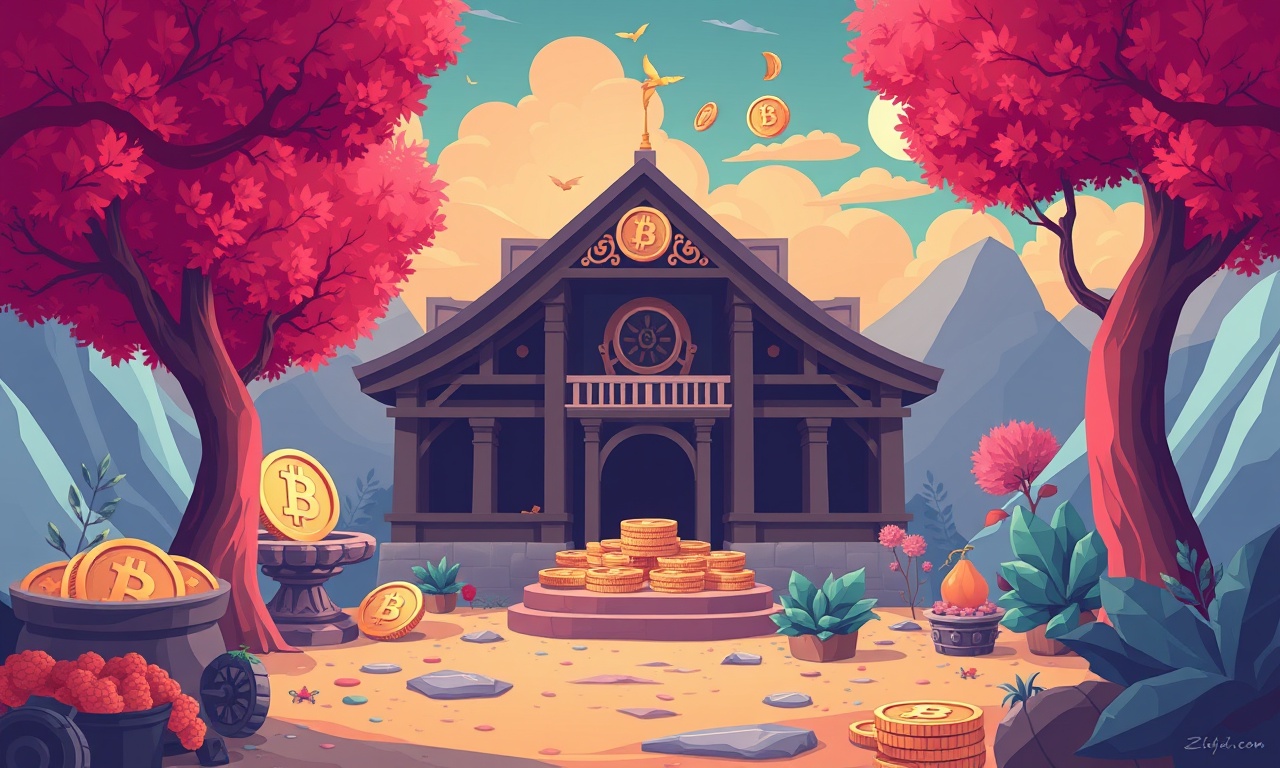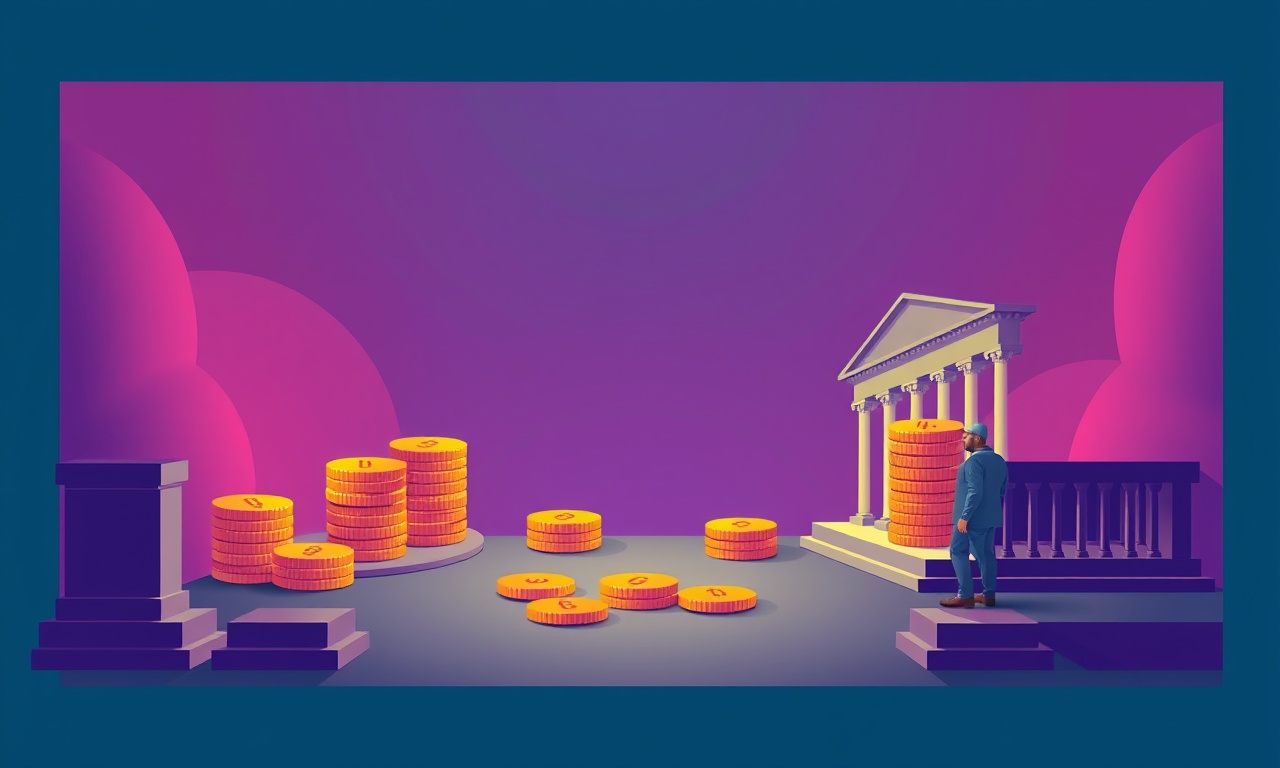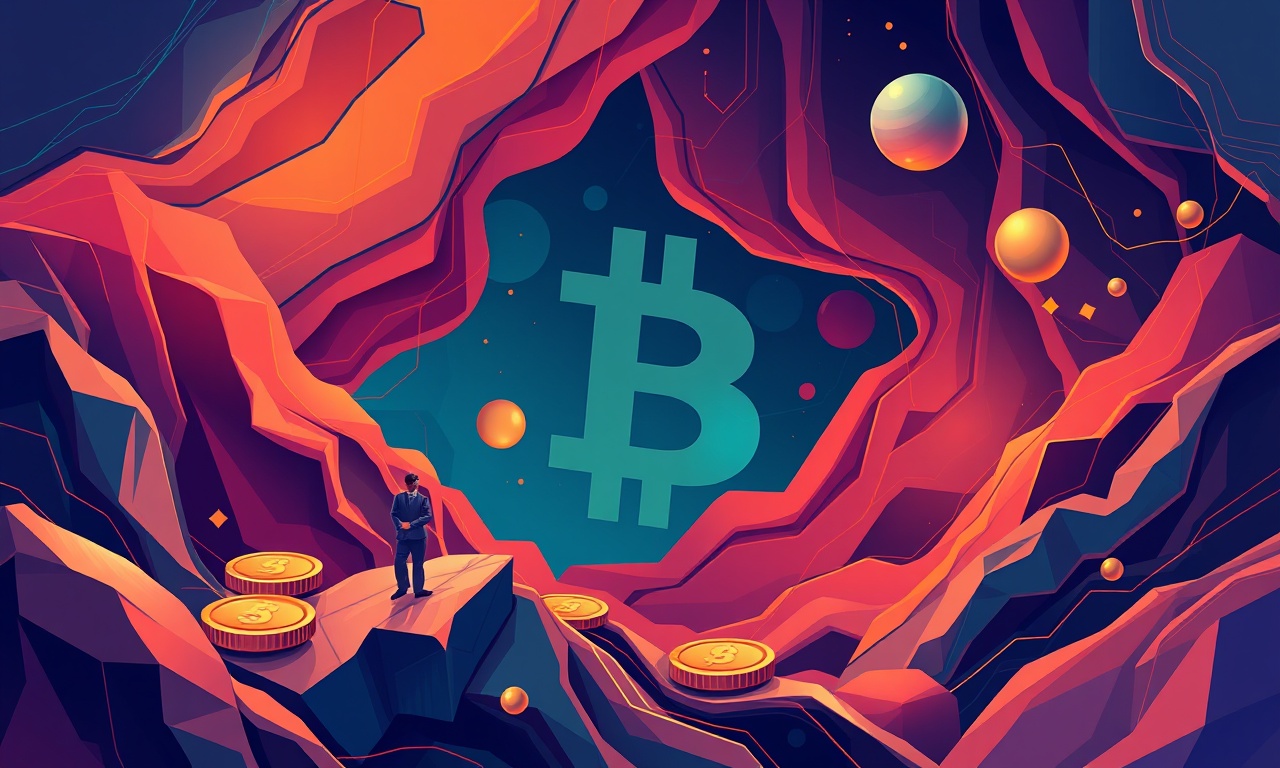Advanced DeFi Project Deep Dives Into NFTFi And GameFi Yield Farming

Introduction
Decentralized finance (DeFi) has evolved beyond simple lending and staking into a complex ecosystem where non‑fungible tokens (NFTs) and interactive gaming mechanics are becoming integral to yield generation. The emerging sectors of NFTFi and GameFi blend ownership, utility, and play with traditional financial incentives, creating new pathways for investors and gamers alike. This article explores how advanced DeFi projects harness NFTFi and GameFi for yield farming, detailing the underlying mechanisms, real‑world examples, risk factors, and future directions. For a deeper look into how yield‑generating NFTs and farming work, see the deep dive into advanced DeFi projects with yield‑generating NFTs and farming.
What Is NFTFi?
NFTFi, or NFT‑based finance, refers to protocols that use NFTs as collateral, liquidity sources, or yield‑generating assets. In traditional DeFi, fungible tokens (FTs) dominate borrowing, lending, and liquidity provision. NFTFi replaces or supplements these with unique, indivisible items—digital art, collectibles, or utility tokens—that can be tokenized, fractionalized, or minted into fungible representations.
Key Concepts
- Collateralization – NFTs can be locked into smart contracts to secure loans or earn interest.
- Fractional Ownership – Large, expensive NFTs can be divided into smaller fungible shares, enabling broader participation.
- Liquidity Pools – Some protocols create liquidity pools that accept NFTs in exchange for stablecoins or other FTs, rewarding liquidity providers.
- Yield Tokens – Tokenized representations of NFT ownership that accrue yield over time, often through staking or profit sharing.
Yield‑Generating NFTs
Unlike static collectibles, yield‑generating NFTs embed financial mechanics within their smart contracts. They can deliver dividends, staking rewards, or even profit shares from associated ventures. For more on how these NFTs work within the broader DeFi ecosystem, read about exploring yield‑generating NFTs and farming in advanced DeFi and GameFi ecosystems.
Staking Yield NFTs
- Token Minting – A project issues an NFT that represents a share of a larger asset pool.
- Staking Contract – Holders lock the NFT in a contract for a predefined period.
- Reward Distribution – Interest or token rewards are distributed proportionally to staked NFTs.
This model incentivizes long‑term holding, similar to bond coupon payments, but with the added flexibility of blockchain transparency.
Dividend‑Bearing NFTs
Certain projects create NFTs tied to revenue streams—e.g., a music streaming royalty token or a virtual real‑estate dividend. NFT holders receive regular payouts directly to their wallet addresses, with amounts proportional to their holdings.
Liquidity‑Providing NFTs
Some protocols allow NFTs to serve as liquidity providers in automated market maker (AMM) pools. By pairing an NFT with a stablecoin, liquidity providers earn a share of trading fees and can withdraw their assets at any time, subject to slippage and impermanent loss considerations.
GameFi Yield Farming
GameFi merges gaming dynamics with DeFi, allowing players to earn tokens, NFTs, or other assets through gameplay, governance participation, or ecosystem contribution. For a comprehensive overview of how NFTFi and GameFi integrate to unlock new yield farms, see the post on NFTFi and GameFi integration in advanced DeFi projects for yield generation.
Play‑to‑Earn Mechanics
- Reward Farming – Players complete quests or achieve milestones to receive fungible rewards that can be staked for yield.
- Skill‑Based Yield – In competitive games, top performers earn higher yields, often scaled by leaderboard position.
- Cross‑Chain Rewards – Some games issue rewards on multiple chains, enabling arbitrage or cross‑chain staking.
In‑Game Asset Liquidity
Digital assets—characters, weapons, skins—can be tokenized and listed on decentralized exchanges. Players who hold high‑value assets can stake them to generate passive income, or trade them for liquidity providers to earn fees.
Governance Yield
By holding governance tokens or staking in‑game assets, players influence protocol decisions and receive a portion of the ecosystem’s revenue as yield. This aligns community participation with financial incentives.
Smart Contract Mechanics
Understanding the underlying code is essential for evaluating risk and potential return.
Oracle Integration
Both NFTFi and GameFi rely heavily on price oracles to value NFTs and in‑game assets. Oracles must provide tamper‑evident, up‑to‑date data; any oracle failure can lead to mispricing, liquidation, or exploitation.
Escrow and Multisig
NFTs are stored in escrow contracts that enforce locking periods, release conditions, and fee distribution. Multisig control adds a layer of security, allowing community or developer oversight before large transfers.
Automated Yield Distribution
Smart contracts automatically calculate and mint yield tokens or distribute dividends based on time elapsed and NFT ownership. Gas optimization is critical to keep fees low for participants.
Slippage and Impermanent Loss
Liquidity pools involving NFTs face higher slippage due to low liquidity and asset volatility. Impermanent loss can occur if the value of the NFT relative to the paired token diverges significantly during the staking period.
Risk Management
Yield farming with NFTs and GameFi introduces unique risks beyond traditional DeFi.
Market Liquidity
NFTs often lack deep liquidity pools, making exits difficult during market downturns. Projects mitigate this by offering secondary markets or by implementing price buffers.
Smart Contract Bugs
Complex logic for yield calculations or asset handling can harbor vulnerabilities. Audits, formal verification, and bug bounty programs are essential safeguards.
Regulatory Uncertainty
Because NFTFi and GameFi protocols straddle multiple asset classes, regulatory scrutiny may evolve, affecting token classification and compliance requirements.
Market Volatility
The price of underlying NFTs or in‑game items can fluctuate dramatically, affecting the overall yield and exposure of staked positions.
Regulatory Uncertainty
The regulatory landscape for digital assets is rapidly evolving, and new legislation could impact the legality of certain yield‑generating strategies or in‑game economies.
Future Outlook
- Cross‑Chain Interoperability – As cross‑chain technology matures, DeFi platforms can seamlessly route NFTs and in‑game assets across blockchains, broadening access to liquidity and farming opportunities.
- Real‑World Asset Tokenization – Beyond purely digital items, tokenizing physical collectibles, real‑estate, and other tangible assets will expand the range of income‑generating NFTs.
- Enhanced Governance Models – Deeper integration of governance and yield will enable community‑driven economic experimentation.
- Increased Game‑Fi Collaboration – Games may evolve to incorporate more complex economic systems, turning gameplay into a fully-fledged investment vehicle.
- Regulatory Clarity – Emerging legal frameworks for digital assets will likely reduce ambiguity, making DeFi and GameFi more accessible to mainstream users.
For a detailed exploration of the latest trends and a comprehensive look at yield farming in this convergence, check out the deep dive into advanced DeFi projects with yield‑generating NFTs and farming.
Conclusion
Advanced DeFi projects are redefining yield farming by integrating NFTFi and GameFi. By turning unique digital assets into income‑generating instruments and embedding financial incentives into gameplay, these protocols broaden participation and deepen ecosystem engagement. Understanding the mechanics, risks, and future trends is essential for investors and gamers who wish to navigate this dynamic frontier. As cross‑chain technology matures and real‑world assets find their place in the digital realm, the convergence of NFTs, games, and finance promises to unlock unprecedented opportunities for yield and ownership. For an in‑depth understanding of how these protocols are reshaping the frontier, see the post on NFTFi and GameFi integration in advanced DeFi projects for yield generation.
.png)
Emma Varela
Emma is a financial engineer and blockchain researcher specializing in decentralized market models. With years of experience in DeFi protocol design, she writes about token economics, governance systems, and the evolving dynamics of on-chain liquidity.
Random Posts

Designing Incentives and Bonding Mechanisms for Treasury Management
Designing incentives and bonding mechanisms turns capital flow into a thriving treasury, aligning rewards with risk to attract liquidity and build a resilient DeFi protocol.
4 months ago

Mastering MEV in Advanced DeFi, Protocol Integration and Composable Liquidity Aggregation
Discover how mastering MEV and protocol integration unlocks composable liquidity, turning DeFi from noise into a precision garden.
3 months ago

Proxy Implementation Risks In Smart Contracts And Their DeFi Impact
Proxy contracts give DeFi upgrades, but hidden pitfalls can trigger exploits and wipe funds. Learn the top risks, how they spread, and practical defenses for developers, auditors, and users.
8 months ago

Advanced DeFi Analytics From On Chain Metrics to Predictive Models
From raw on, chain data to predictive models, discover how to turn DeFi activity into actionable insights through ingestion, cleaning, feature engineering, cohorting, and ML.
1 month ago

Deep Dive Into Protocol Integration for Advanced DeFi Liquidation Bots
Discover how advanced DeFi liquidation bots convert protocol quirks into profit by mastering smart-contract interfaces, fee rules, and market timing to capture undercollateralised opportunities.
5 months ago
Latest Posts

Foundations Of DeFi Core Primitives And Governance Models
Smart contracts are DeFi’s nervous system: deterministic, immutable, transparent. Governance models let protocols evolve autonomously without central authority.
2 days ago

Deep Dive Into L2 Scaling For DeFi And The Cost Of ZK Rollup Proof Generation
Learn how Layer-2, especially ZK rollups, boosts DeFi with faster, cheaper transactions and uncovering the real cost of generating zk proofs.
2 days ago

Managing Debt Ceilings and Stability Fees Explained
Debt ceilings cap synthetic coin supply, keeping collateral above debt. Dynamic limits via governance and risk metrics protect lenders, token holders, and system stability.
3 days ago
